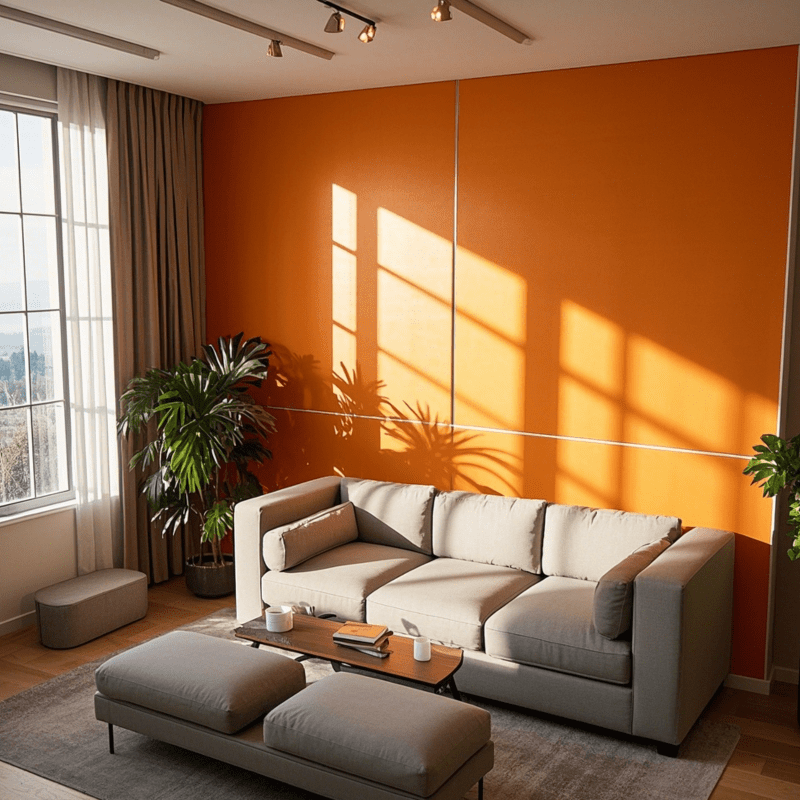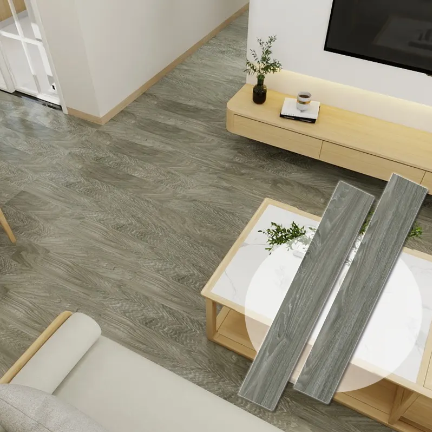ခေတ်မှီ နံရံတည်ဆောက်မှုစနစ်များ၏ ခရီးစဉ်
The Evolution of အင်္ဂါပြင် နည်းပညာသည် တည်ဆောက်ရေးသမိုင်းတွင် အရေးပါသည့်တိုးတက်မှုများထဲမှ တစ်ခုအဖြစ်ကိုယ်စားပြုသည်။ ရိုးရှင်းသော ပလာစတာနံရံများမှသည် အင်ဂျင်နီယာဒီဇိုင်းပြားများအထိ နံရံစနစ်များတိုးတက်မှုသည် နေရာများကိုတည်ဆောက်ခြင်းနှင့် ဒီဇိုင်းထုတ်ခြင်းနည်းလမ်းများကို ပြောင်းလဲစေခဲ့သည်။ ယနေ့ခေတ်နံရံပြားနည်းပညာသည် တီထွင်ဖန်တီးမှုများစွာပါဝင်သော ပစ္စည်းများ၊ တည်တံ့သောကျင့်ထုံးများ၊ ထုတ်လုပ်မှုလုပ်ငန်းစဉ်များကို ပေါင်းစပ်ထားပြီး အတိတ်က ဆယ်စုနှစ်များကတည်းက မစိတ်ကူးတွေးမိသော နည်းပညာများကို ပေးစွမ်းနေသည်။
ဤထူးချွန်သောတိုးတက်မှုသည် တည်ဆောက်ရေးထိရောက်မှုကိုသာမက အဆောက်အဦ၏စွမ်းဆောင်ရည်၊ ခံနိုင်ရည်၊ အလှအပဖော်ထုတ်မှုများကိုပါ မြှင့်တင်ပေးခဲ့သည်။ ခေတ်မှီနံရံပြားဖြေရှင်းချက်များသည် မီးခံနိုင်စွမ်းအားကောင်းခြင်း၊ အသံထိန်းချုပ်မှုပိုမိုကောင်းမွန်ခြင်း၊ စိုထိုင်းဆထိန်းချုပ်မှုတိုးတက်ခြင်းတို့ကို ပေးစွမ်းသောကြောင့် ခေတ်ပြိုင် အိမ်ခြံမြေတည်ဆောက်မှုနှင့် တည်ဆောက်ရေးတွင် မပါမဖြစ်လိုအပ်သောအရာဖြစ်လာခဲ့သည်။

နံရံပြားစနစ်များ၏ သမိုင်းတွင်းဖွံ့ဖြိုးမှု
အစောပိုင်းကာလ နံရံတည်ဆောက်မှုနည်းလမ်းများ
နံရံဘုတ်နည်းပညာများ ပေါ်ပေါက်လာမှုအစီအစဉ်မတိုင်မီက ဆောက်လုပ်ရေးလုပ်သားများသည် သစ်သားပြားများ၊ သံမဏိပြားများနှင့် အခြေခံသစ်သားပြားများကို အသုံးပြုခဲ့ကြသည်။ ထိုနည်းလမ်းများသည် လုပ်သားအင်အားများစွာလိုအပ်ပြီး အချိန်ကြာမြင့်စွာကုန်ဆုံးခဲ့ရပြီး အရည်အသွေးများ မတူညီမှုများစွာဖြစ်ပေါ်စေခဲ့သည်။ ၁၉၀၀ ပြည့်နှစ်အစောပိုင်းက ဂစ္စမတ်အခြေခံနံရံဘုတ်များကို ပထမဆုံးမိတ်ဆက်ခဲ့သည့်အခါတွင် နံရံဆောက်လုပ်မှုအတွက် စံထားသည့်နည်းလမ်းတစ်ခုကို ပေးဆုံးဖြတ်ခဲ့သည်။
နံရံဘုတ်များ၏ ပထမပုံစံများသည် အလွန်ရိုးရှင်းသော တစ်ထပ်တည်းသောပြားများဖြစ်ပြီး နံရံအားအခြေခံဖုံးအုပ်ပေးနိုင်သည်။ ထိုစိတ်ကူးများသည် တိုးတက်မှုကြီးတစ်ခုအဖြစ် ကိုယ်စားပြုသော်လည်း ယနေ့ခေတ်တွင် ကျွန်ုပ်တို့မျှော်လင့်ထားသည့် အဆင့်မြင့်လုပ်ဆောင်ချက်များစွာကို မပါဝင်စေခဲ့ပေ။ ဥပမာအားဖြင့် စိုထိုင်းစေသောအခြေအနေများကိုခံနိုင်ရည်ရှိခြင်းနှင့် အသံကိုတားဆီးနိုင်သောစနစ်များကို ပေးဆုံးဖြတ်ခဲ့ခြင်းမရှိပေ။
အလယ်ခေတ် တီထွင်မှုများ
ဒုတိယကမ္ဘာစစ်ပြီးနောက် တည်ဆောက်ရေးလှုပ်ရှားမှုများက နံရံဘုတ်နည်းပညာတွင် အဓိကဖွံ့ဖြိုးတိုးတက်မှုများကို တွန်းလှန်ပေးခဲ့သည်။ ထုတ်လုပ်သူများက စွမ်းဆောင်ရည်ကို မြှင့်တင်ရန် မတူညီသော အတွင်းပိုင်းပစ္စည်းများ၊ မျက်နှာပြားစက္ကူများနှင့် ပေါင်းစပ်ဖြည့်စွက်ပစ္စည်းများကို စမ်းသပ်လာခဲ့ကြသည်။ ဤကာလအတွင်းတွင် ရေကိုခံနိုင်သော စိမ်းလဲ့ဘုတ်၊ မီးခံနိုင်သော ပန်းလာများနှင့် ပေါ့ပါးသော တည်ဆောက်ရေးပစ္စည်းများကို စတင်ကြိုးပမ်းမှုများကို မှတ်တမ်းတင်ထားခဲ့သည်။
ဤခေတ်အတွင်းတွင် နံရံဘုတ်နည်းပညာမှာ အထူးသဖြင့် အသုံးပြုမှုအလိုက် ဒီဇိုင်းထုတ်ထားသော ထုတ်ကုန်များကို ပါဝင်လာစေခဲ့သည်။ စျေးနှုန်းသက်သာမှုနှင့် တပ်ဆင်ရာတွင် လွယ်ကူမှုရှိစေရန် ထိန်းသိမ်းထားနိုင်သော်လည်းကောင်း၊ တည်ဆောက်ရေးလိုအပ်ချက်များကို ဖြည့်ဆည်းပေးနိုင်သည့် ဖြေရှင်းချက်များကို ဖွံ့ဖြိုးတိုးတက်အောင် လုပ်ဆောင်ရန် အရေးကြီးမှုကို လည်း နားလည်လာခဲ့ကြသည်။
ခေတ်မီနည်းပညာဖွံ့ဖြိုးမှုများ
လှုပ်ရှားသော ဝัสดါများ၏ အစုံအကျဉ်းချုပ်
ခေတ်မှီ နံရံပြားများတွင် စမတ်ပစ္စည်းများနှင့် ဖန်တီးမှုပြုလုပ်ထားသော ပေါင်းစပ်ပစ္စည်းများကို အသုံးပြုလာကြသည်။ ခေတ်မှီ ပန်းကန်များတွင် အပူချိန်ထိန်းညှိရန် ဖိုင်ဆဲလ်ပြောင်းလဲမှုပစ္စည်းများ၊ ပိုးသတ်ဆေးများကို ပေါင်းစပ်ထည့်သွင်းထားခြင်းကြောင့် ပိုမိုကောင်းမွန်သော ကျန်းမာရေးအရည်အသွေးကို ရရှိစေပြီး အမျှင်များကို အားဖြည့်ထားခြင်းကြောင့် ပိုမိုခံနိုင်ရည်ရှိသော ပစ္စည်းများကို ထုတ်လုပ်နိုင်သည်။ ဤစမတ်ဖြေရှင်းချက်များက အတွင်းပိုင်း ပတ်ဝန်းကျင်အရည်အသွေးကို တိုးတက်စေပြီး စွမ်းအင်စားသုံးမှုကို လျော့နည်းစေသည်။
နန်းနည်းပညာ၏ ပေါင်းစပ်မှုက နံရံပြားထုတ်လုပ်မှုကို ပိုမိုတိုးတက်စေခဲ့ပြီး ကိုယ်တိုင်သန့်ရှင်းစေသော မျက်နှာပြင်များ၊ ပိုမိုကောင်းမွန်သော စိုထိုင်းစာခံနိုင်ရည်ရှိမှုနှင့် တည်ဆောက်ပုံအဆင့်အတန်းကို တိုးတက်စေရန် ဖွံ့ဖြိုးတိုးတက်မှုကို ဖြစ်ပေါ်စေသည်။ ဤတိုးတက်မှုများက ခေတ်မှီနံရံပြားများကို ပိုမိုလွယ်ကူစွာ အသုံးပြုနိုင်စေပြီး ပိုမိုတောင်းဆိုမှုများကို ဖြည့်ဆည်းပေးနိုင်သည်။
ရေရှည်တည်တံ့သော ထုတ်လုပ်မှု လုပ်ငန်းစဉ်များ
ယနေ့ခေတ် နံရံဘုတ်နည်းပညာသည် တည်တံ့ခိုင်မြဲမှုနှင့် ပတ်ဝန်းကျင်တာဝန်ယူမှုတို့ကို အလေးထားပါသည်။ ထုတ်လုပ်သူများသည် ကာဗွန်ထုတ်လွှတ်မှု၊ ရေစားသုံးမှုနှင့် အမှိုက်များထုတ်လုပ်မှုကို လျော့နည်းစေသည့် ပတ်ဝန်းကျင်နှင့် ညီညွတ်သော ထုတ်လုပ်မှုနည်းလမ်းများကို တီထွင်ထုတ်လုပ်ခဲ့ပါသည်။ ပြန်လည်အသုံးပြုသော ပစ္စည်းများကို နံရံဘုတ်ထုတ်လုပ်မှုတွင် တဖြည်းဖြည်းတိုးချဲ့ထည့်သွင်းလာပြီး တည်ဆောက်ရေးလုပ်ငန်းတွင် ပို၍ စက်ဝန်းစီးပွားရေးကို ဖန်တီးပေးနေပါသည်။
တိုးတက်သော ထုတ်လုပ်မှုနည်းပညာများက သော နံရံဘုတ်များကို ထုတ်လုပ်ရာတွင် သိပ်သည်းဆကို အကောင်းဆုံးဖြစ်အောင် လုပ်ဆောင်ပေးနိုင်သဖြင့် ပို၍ပေါ့ပါးပြီး ခိုင်မာသော ပန်းပြားများကို ထုတ်လုပ်နိုင်ပါသည်။ ဤတိုးတက်မှုများက သယ်ယူပို့ဆောင်ရေးစရိတ်နှင့် တပ်ဆင်ရေးအား လျော့နည်းစေသည့်အပြင် အဆောက်အဦများ၏ စုစုပေါင်းတည်တံ့ခိုင်မြဲမှုကိုလည်း အထောက်အကူပြုပါသည်။
ခေတ်မှီနံရံဘုတ်များ၏ စွမ်းဆောင်ရည်
တိုးမြှင့်ထားသော ဖွဲ့စည်းထားသည့် ဂုဏ်သတ္တိများ
ခေတ်မှီ နံရံပြားနည်းပညာသည် ဖွဲ့စည်းမှုဆိုင်ရာစွမ်းဆောင်ရည်တွင် ထူးချွန်သော တိုးတက်မှုများ ရရှိခဲ့ပါသည်။ ခေတ်ပြိုင်ပြားများသည် အထက်စား ဓာတ်ခံနိုင်ရည်ရှိခြင်း၊ ပိုမိုကောင်းမွန်သော ဝန်ပိုခံနိုင်သည့်စွမ်းရည်၊ နှင့် ပိုမိုကောင်းမွန်သော ဖွဲ့စည်းပုံတည်ငြိမ်မှုတို့ကို ပေးစွမ်းပါသည်။ ဤတိုးတက်မှုများက မိမိတို့၏ ဖွဲ့စည်းမှုအခြေအနေကို ထိန်းသိမ်းထားရင်း ပိုမိုရဲရင့်စွာ ဒီဇိုင်းထုတ်လုပ်ရန် မိမိတို့အား ပေးစွမ်းပါသည်။
အထူးသဖြင့် နျူကလိယပုံစံများနှင့် အားဖြည့်နည်းပညာများကို တီထွင်ခြင်းကြောင့် နံရံပြားများသည် အကြမ်းဖက်ရာသီဥတု၊ ငလျင်လှုပ်မှုများ၊ သဘာဝပတ်ဝန်းကျင်မှ အခြားသော စိန်ခေါ်မှုများကို ခံနိုင်ရည်ရှိပါသည်။ ဤတိုးတက်သော ခံနိုင်ရည်ရှိမှုက အဆောက်အဦများ၏ သက်တမ်းကို ကြာရှည်စေပြီး ထိန်းသိမ်းမှုလိုအပ်ချက်များကို လျော့နည်းစေပါသည်။
အသံနှင့် အပူချိန်ဆိုင်ရာ အဆင့်မြှင့်တင်ထားသော ဂုဏ်သတ္တိများ
နံရံပြားနည်းပညာတွင် အရေးပါသော တိုးတက်မှုများထဲမှ တစ်ခုမှာ အသံနှင့် အပူချိန်ဆိုင်ရာ စွမ်းဆောင်ရည်ကို တိုးတက်စေခြင်းဖြစ်ပါသည်။ ခေတ်မှီပြားများသည် အသံကို နှိမ်နှင်းပေးသော နည်းပညာများနှင့် အပူချိန်ကာကွယ်ပေးသော ဂုဏ်သတ္တိများကို ပေါင်းစပ်ထားပါသည်။ ဤနည်းပညာများက ပိုမိုသက်တောင့်သက်သာရှိစေပြီး စွမ်းအင်ခြွေတာသော အဆောက်အဦများကို တည်ဆောက်ရာတွင် ကူညီပေးပါသည်။
အလွှာစုံ ဒီဇိုင်းများနှင့် အထူးပြု ဗဟိုပစ္စည်းများသည် အခန်းများအကြား အသံလွှဲပြောင်းမှုကို လျော့နည်းစေပြီး နံရံပရိုဖိုင်းများမှာ အချိုးအစားအားဖြင့် ပါးပါးနေစေသည်။ ဒီတီထွင်မှုတွေက တန်ဖိုးရှိတဲ့ ကြမ်းပြင်နေရာကို စွန့်လွှတ်ခြင်းမရှိပဲ အံ့ဖွယ် အသံအမှတ်တွေကို ရရှိဖို့ ဖြစ်နိုင်စေတယ်။
နံရံပြား ဆန်းသစ်တီထွင်မှု အနာဂတ် ဦးတည်ချက်များ
ဒီဂျစ်တယ် Integration နှင့် Smart Features
နံရံပြား နည်းပညာရဲ့ အနာဂတ်ဟာ ဒစ်ဂျစ်တယ် ဆန်းသစ်တီထွင်မှုနဲ့ တိုးတိုးပြီး ဆက်စပ်နေပါတယ်။ ပေါ်ပေါက်လာနေတဲ့ အလားအလာတွေထဲမှာ အဆောက်အအုံ ကျန်းမာရေး၊ အပူချိန်နဲ့ စိုထိုင်းမှုကို စောင့်ကြည့်ဖို့ အစိတ်အပိုင်းတွေပါတဲ့ အာရုံခံကိရိယာတွေပါတဲ့ ဘောင်တွေ ပါဝင်ပါတယ်။ ဒီစိတ်ချရတဲ့ အချက်တွေက ကြိုတင်ခန့်မှန်းထားတဲ့ ထိန်းသိမ်းမှု နဲ့ အဆောက်အအုံ စွမ်းဆောင်ရည်ကို အကောင်းဆုံး စီမံခန့်ခွဲမှုကို လုပ်ပေးပါတယ်။
ပတ်ဝန်းကျင်အခြေအနေများအပေါ် တက်ကြွစွာ တုံ့ပြန်နိုင်သော နံရံဘုတ်များ တီထွင်ရန် သုတေသနပြုနေခြင်းဖြစ်သည်၊ ဥပမာ ၎င်းတို့၏ အပူဓာတ်ဆိုင်ရာ ဂုဏ်သတ္တိများကို အလိုအလျောက်ပြင်ဆင်ခြင်း သို့မဟုတ် စိုထိုင်းမှု ပြဿနာများ ပြဿနာဖြစ်မလာမီ ရှာဖွေပြီး အစီရင်ခံခြင်း။
အဆင့်မြင့်ကုန်ထုတ်လုပ်မှုနည်းပညာများ
စက်မှုလုပ်ငန်းတွင် အလိုအလျောက်နှင့် တိကျသော ထုတ်လုပ်မှုလုပ်ငန်းစဉ်များသို့ ရွှေ့ပြောင်းလာခြင်းကို တွေ့မြင်ရပါသည်။ နှောင့်ယှက်မှုနည်းပါးစေပြီး စိတ်ကြိုက်ပြင်ဆင်နိုင်သည့် အခွင့်အလမ်းများကို ပေးမည့် နည်းပညာများဖြစ်သော ၃D ပရင့်ထုတ်ခြင်းနှင့် ရိုဘော့စ်များဖြင့် စုစည်းထုတ်လုပ်ခြင်းတို့ကို နှောင့်ယှက်မှုနည်းပါးစေရန်အတွက် နှင့် စိတ်ကြိုက်ပြင်ဆင်နိုင်သည့် အခွင့်အလမ်းများကို ပေးမည့်နည်းပညာများအဖြစ် လေ့လာနေကြပါသည်။ ထုတ်လုပ်မှုနည်းပညာများသည် နံရံပြားများကို ထုတ်လုပ်ပေးခြင်းနှင့် တပ်ဆင်ပေးခြင်းတို့ကို တီထွင်ဆန်းသစ်စေနိုင်ပါသည်။
အနာဂတ်တွင် ပရိုဂရမ်ပြုလုပ်နိုင်သော ဂုဏ်သတ္တိများဖြင့် နံရံပြားများကို ထည့်သွင်းနိုင်မည်ဖြစ်ပြီး အဆောက်အဦများ၏ လိုအပ်ချက်များ သို့မဟုတ် အသုံးပြုသူများ၏ နှစ်သက်မှုများ ပြောင်းလဲလာသည့်အခါတွင် တပ်ဆင်ပြီးနောက် ပြင်ဆင်နိုင်မည့် စွမ်းရည်ကို ပေးမည်ဖြစ်ပါသည်။
မေးလေ့ရှိသောမေးခွန်းများ
ခေတ်မှီနံရံပြားနည်းပညာ၏ အဓိက အကျိုးကျေးဇူးများမှာ အဘယ်နည်း။
ခေတ်မှီ နံရံပြားနည်းပညာသည် မီးခံနိုင်မှု၊ အသံကာကွယ်ပေးမှု၊ စိုထိုင်းဆထိန်းချုပ်မှုတို့တွင် အဆင့်မြင့်စွမ်းဆောင်ရည်ကို ပေးစွမ်းပါသည်။ အများကြီးပိုမိုကောင်းမွန်သော တံဆိပ်ခေါင်းများကို ပေးစွမ်းပါသည်။ ထပ်တိုးအားဖြင့် ခေတ်မှီနံရံပြားများတွင် ဇီဝဖျက်စီးမှုကိုတားဆီးပေးသော ကာကွယ်မှုနှင့် တည်ငြိမ်မှုတို့ကို ပိုမိုကောင်းမွန်စေသော နည်းပညာများကို ထည့်သွင်းထားပါသည်။
နံရံပြားဖွံ့ဖြိုးမှုတွင် တစ်ခုလုံးကို ဘယ်လိုလွှမ်းမိုးခဲ့ပါသလဲ။
တစ်ခုလုံးကို နံရံပြားနည်းပညာ ဖွံ့ဖြိုးတိုးတက်မှု၏ အဓိကအားကောင်းအဖြစ် ပြောင်းလဲလာခဲ့ပြီး ပတ်ဝန်းကျင်နှင့် ကိုက်ညီသော ထုတ်လုပ်မှုလုပ်ငန်းစဉ်များကို ဖွံ့ဖြိုးတိုးတက်စေခဲ့ပြီး ပြန်လည်အသုံးပြုသော ပစ္စည်းများကို ပိုမိုအသုံးပြုလာခြင်းနှင့် ထုတ်လုပ်မှုနှင့် စွမ်းဆောင်ရည်တွင် စွမ်းအင်ထိရောက်မှုကို တိုးတက်စေခဲ့ပါသည်။ ထုတ်လုပ်သူများသည် ကာဗွန်ဓာတ်ကို လျော့နည်းစေရန် အာရုံစိုက်လာပြီး ထုတ်ကုန်၏ အရည်အသွေးကို ထိန်းသိမ်းထားခြင်း သို့မဟုတ် တိုးတက်ကောင်းမွန်လာစေရန် အာရုံစိုက်လာကြပါသည်။
နောင်နှစ်များတွင် နံရံပြားနည်းပညာမှ မည်သည့်အရာများကို မျှော်လင့်ရမည်နည်း။
နံရံ ဘုတ်နည်းပညာတွင် အနာဂတ်တိုးတက်မှုများတွင် စမတ်လုပ်ဆောင်ချက်များ ပိုမိုထည့်သွင်းခြင်း၊ ပတ်ဝန်းကျင်ဆိုင်ရာ စွမ်းဆောင်ရည် တိုးတက်ခြင်း၊ ပိုမိုကောင်းမွန်သော စိတ်ကြိုက်ပြင်ဆင်နိုင်သည့် ရွေးချယ်စရာများ ပါဝင်လာနိုင်ပါသည်။ ကျွန်ုပ်တို့သည် ပိုမိုရှုပ်ထွေးသော ပစ္စည်းများ၊ အဆောက်အဦးစီမံခန့်ခွဲမှုစနစ်များနှင့် ပိုကောင်းမွန်သော ပေါင်းစပ်နိုင်မှု၊ တိုးတက်နေသော စွန့်စားနိုင်သော ထုတ်လုပ်မှုလုပ်ငန်းစဉ်များကို မကြာခဏ မြင်တွေ့ရမည်ဖြစ်ပါသည်။

